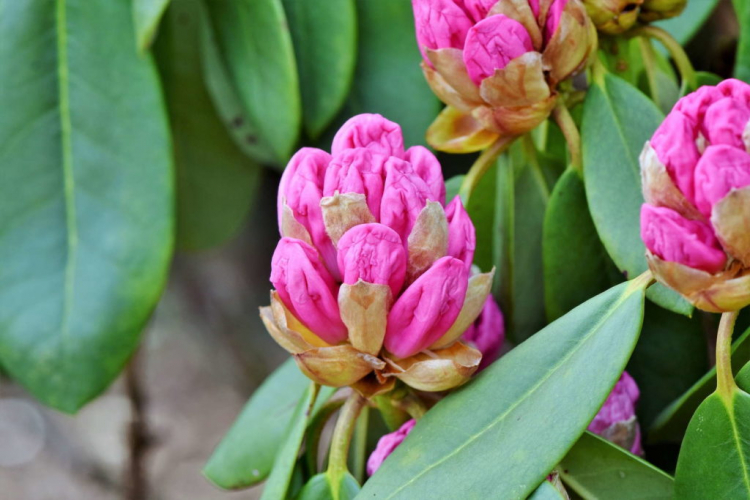Pruning Rhododendrons: When And How To Prune Correctly
Rhododendrons enchant us with their lush flowers. But when and how do you cut them correctly to achieve the best possible bloom? When and how do you prune rhododendrons correctly to get the best possible bloom?
Rhododendrons ( rhododendrons ) can be found everywhere – in gardens, parks, and even in the great outdoors. The purple, pink and white flowers, which attract everyone’s attention in spring, are particularly popular. The evergreen shrub from the heather family ( Ericaceae ) usually grows well even without heavy pruning. At certain times, however, a suitable maintenance cut can still be useful. We’ll show you what you need to consider for a perfect rhododendron prune.
You May Also Like Fertilizing Rhododendrons
Pruning rhododendrons: the right time
The ideal time to cut rhododendrons always depends on the particular issue. A maintenance pruning to bring the overgrown shrub back into shape is best done after flowering from May to June. If the rhododendron is to be pruned more strongly due to internal baldness, you should do this before it blooms in autumn or spring so that no nesting birds are disturbed when pruning.

Prune the rhododendron after flowering
Slightly pruning after flowering is a suitable method for cutting the rhododendron into shape and removing diseased and protruding shoots. Ideally, make the cut right after flowering (May to mid-June). When pruning a rhododendron, keep the following things in mind:
- Use clean and sharp secateurs
- Cut takes place after a branch branch
- Set the cut at a slight angle
- Wear gloves when pruning
- Removal of all sick, injured, and protruding shoots
- Do not injure any buds that have already formed
Since the dormant buds are directly below the tuft of leaves, the cut is made directly behind it. The cut is made at an angle so that water can better run off the cut surface. The buds for the next year will be planted right after flowering, so you should be particularly careful. Try not to damage any buds when pruning, so that you can enjoy the flowers again next year. This works best with a smaller pair of rose scissors. Also, make sure that your chosen garden tool is always clean and sharp so that no diseases are transmitted and the shoot is only minimally injured.
The next bloom is not the only reason to be careful: from March to the end of September is the breeding season for native birds and they like to make themselves comfortable in their rhododendrons. Therefore: larger prunings must be postponed to autumn or spring – this is also required by law. Rhododendrons are also poisonous – so always wear gloves.

Cutting rhododendrons: instructions in 5 steps
In the winter months, when the nesting season is over, more pruning work can be carried out on the bush. A strong pruning of the rhododendron is carried out when:
- the plant is bald from the inside. This way more light comes back inside and your rhododendron grows nicely branched and bushy.
- the plant has been cut incorrectly or badly damaged over the years and is to be brought back into shape by a rejuvenation cut.
It makes no difference whether you prune back in autumn from October or in spring around February. Only there should be no danger of frost. However, rhododendrons tolerate pruning differently. Grafted plants usually have a problem with heavy pruning, whereas unrefined plants can tolerate pruning right into the old wood. In addition, it can sometimes take several years for the plant to grow back to its old shape. You should also not expect flowering in the first two years. If a strong pruning should nevertheless be necessary, proceed as follows:
- Use clean and sharp tools
- Make a p directly after a branch branch
- Make the prune at a slight angle
- Let stand at least half a meter
These products are ideal for pruning your shrubs, hedges, and trees:
- Felco Secateurs: Manual pruning, pruning, and gardening shears recommended for all types of cutting. In addition to plastic-coated handles, it has a precision adjustment system for the blade and anvil blade.
- Felco fruit tree and secateurs: Robust fruit tree and secateurs with wire cutter, sap groove, and micrometer adjustment.
- Gardena telescopic arm scissors: Practical secateurs for effortless cutting of tall trees and dense shrubs from the ground.






